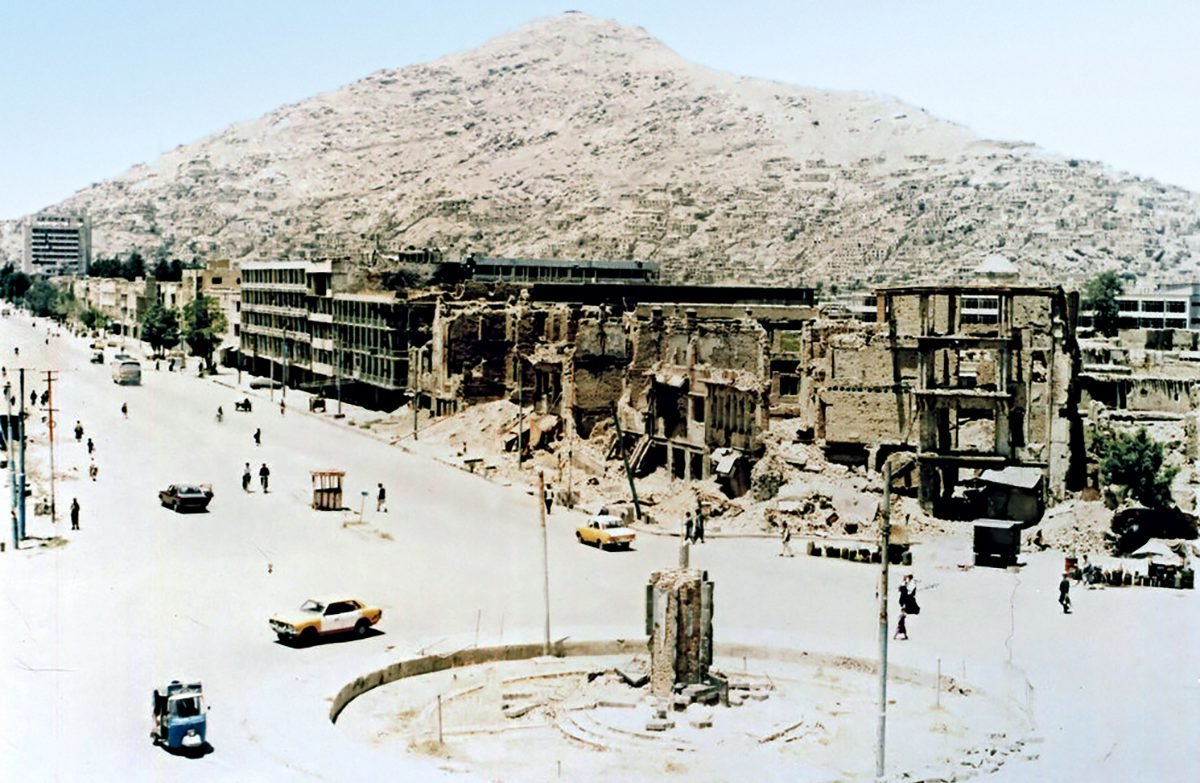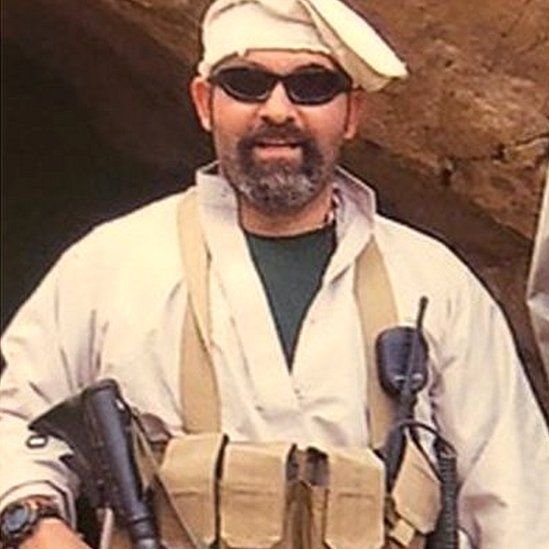
A view of Kabul during civil war, showing destruction caused by infighting of fundamentalist groups after the fall of the pro-Russian government of Mohammad Najibullah in 1992, as documented by the Revolutionary Association of the Women of Afghanistan. Photo courtesy of Wikimedia Commons.
The immediate withdrawal of US troops from Afghanistan after 20 years of sustained combat is eerily reminiscent of the end of the Soviet-Afghan War.
After entering Afghanistan in 1979, the Soviet Union’s military established a pro-Moscow regime in Kabul, the country’s capital and largest city. For nine brutal years, the Soviets wiped out entire villages and surrounding regions, indiscriminately killing civilians and Afghan resistance fighters, otherwise known as the mujahedeen. Behind the scenes, the CIA provided weapons and logistical support — equivalent to $2 billion — to the mujahedeen fighters combating the Soviet Red Army. The effort, called Operation Cyclone, became the largest covert action in US history and ended in 1989.
When the Soviet Union collapsed in 1991, the Russian military briefly continued to finance its Afghan puppet government. The cessation of Russian funding in 1992, however, plunged Afghanistan into a humanitarian crisis, in which mujahedeen fighters — who had once been united against a common Soviet enemy — turned against one another in a free-for-all claim to power. The result was a civil war, during which a fierce battle for control of Kabul raged from 1992 to 1996, ultimately giving rise to the Taliban.
Kabul is going to be under siege soon. In the 90s, a horrific human toll ensued with Kabul getting pummeled. My first account at CIA in Jan ‘93. No one cared. Until the WTC bombing and worry over the Afghan Arabs…and civil war raged….history repeats… https://t.co/KcwVr52dTl
— Marc Polymeropoulos (@Mpolymer) August 12, 2021
The internecine fighting resulted in 25,000 deaths in Kabul out of the city’s estimated total population of 1.6 million people in 1992. Additionally, some 500,000 people fled Kabul in the months following the city’s fall in April 1992, according to the International Committee of the Red Cross. The fighting carried on for four years. Meanwhile, the various militias abducted thousands of civilians, many of whom were never seen again.
“Most of the destruction that scars Kabul even today took place during this period and in the years immediately following—before the Taliban marched on Kabul,” the Human Rights Watch wrote on its website in July 2005.
Marc Polymeropoulos, a retired CIA analyst, case officer, and paramilitary officer with expertise and overseas experience in Afghanistan, warns that another humanitarian disaster of comparable scale remains a possibility.
“I look back to the siege of Kabul in the mid-1990s and it was awful; they caused enormous humanitarian suffering,” Polymeropoulos told Coffee or Die Magazine in a recent phone interview, before the Taliban takeover of Kabul. “So you might see the same thing now with the rapid gains of the Taliban and the only remaining city. If the reports of Kandahar falling and Herat falling are true, there’s only one site left for the Taliban, where in the past there was horrific civilian carnage.”

The security void left by America’s withdrawal from Afghanistan also carries the risk that Afghanistan could once again become a sanctuary for terrorist groups.
“Because of the World Trade Center bombing in 1993, people started worrying about the ‘Afghan Arabs’ — they are different from the mujahedeen — and were 10,000 individuals from all around the Arab world who came to fight with the mujahedeen against the Soviet Union,” Polymeropoulos told Coffee or Die, referring to the terrorist bombing of the World Trade Center on Feb. 26, 1993, which first alerted the US government to the risk of Islamic terrorist groups mounting attacks from within their Afghanistan enclave.
According to Polymeropoulos, the Arabs who fought against the Soviet Union in Afghanistan “became very radicalized.”
“So when the war was ending, they would go back to their own countries and turn their sights elsewhere,” Polymeropoulos said.
The military’s hasty departure from Afghanistan this year — only to make a last-ditch return to evacuate the US embassy in Kabul — also harkens back to the fall of South Vietnam to communist forces from North Vietnam and the Viet Cong in 1975. This same scenario played out with the US abandonment of Kurds in Syria. And now, the world watches once again as America’s allies face defeat in the wake of an ill-planned and rushed US retreat.
“I definitely worry about the future of the US involvement in conflict because we work with indigenous partners,” Polymeropoulos said, adding that’s what US special operations forces and the CIA do best. “It’s a forward-facing projection of US power that relies on the local populations to assist. So people are going to remember how we kind of just got up and left.”
Read Next:

Matt Fratus is a history staff writer for Coffee or Die. He prides himself on uncovering the most fascinating tales of history by sharing them through any means of engaging storytelling. He writes for his micro-blog @LateNightHistory on Instagram, where he shares the story behind the image. He is also the host of the Late Night History podcast. When not writing about history, Matt enjoys volunteering for One More Wave and rooting for Boston sports teams.
BRCC and Bad Moon Print Press team up for an exclusive, limited-edition T-shirt design!
BRCC partners with Team Room Design for an exclusive T-shirt release!
Thirty Seconds Out has partnered with BRCC for an exclusive shirt design invoking the God of Winter.
Lucas O'Hara of Grizzly Forge has teamed up with BRCC for a badass, exclusive Shirt Club T-shirt design featuring his most popular knife and tiomahawk.
Coffee or Die sits down with one of the graphic designers behind Black Rifle Coffee's signature look and vibe.
Biden will award the Medal of Honor to a Vietnam War Army helicopter pilot who risked his life to save a reconnaissance team from almost certain death.
Ever wonder how much Jack Mandaville would f*ck sh*t up if he went back in time? The American Revolution didn't even see him coming.
A nearly 200-year-old West Point time capsule that at first appeared to yield little more than dust contains hidden treasure, the US Military Academy said.












